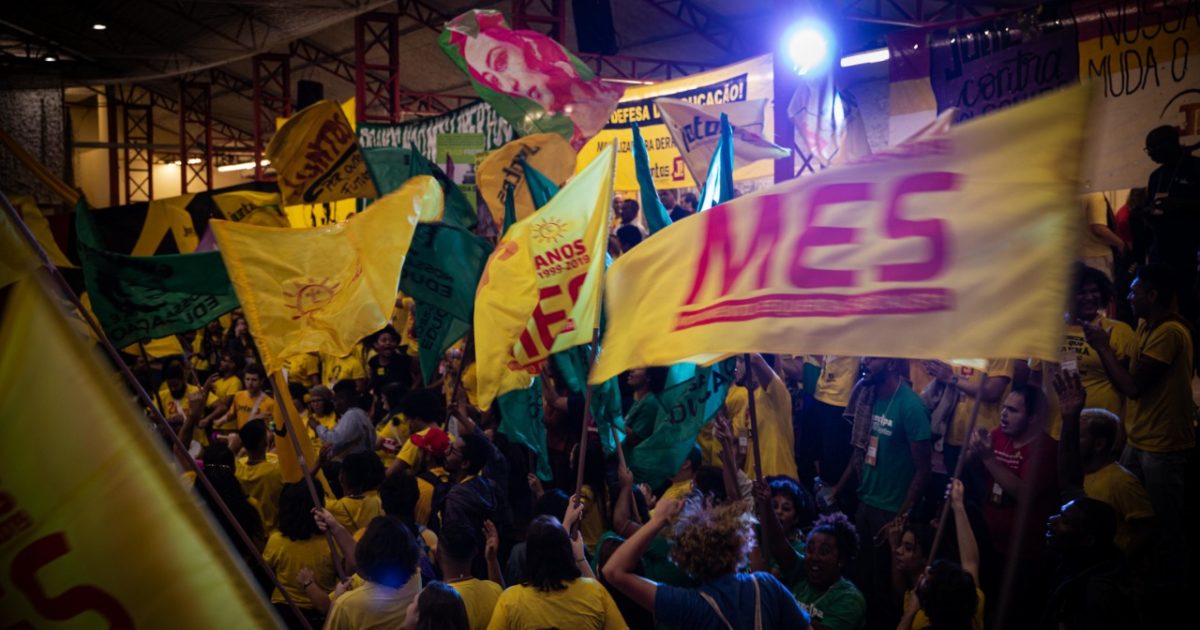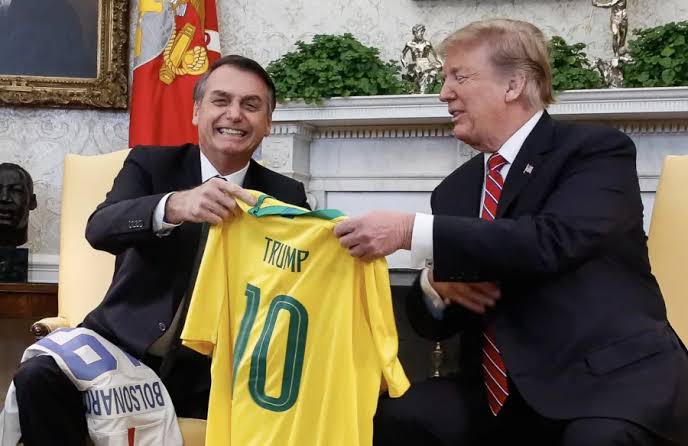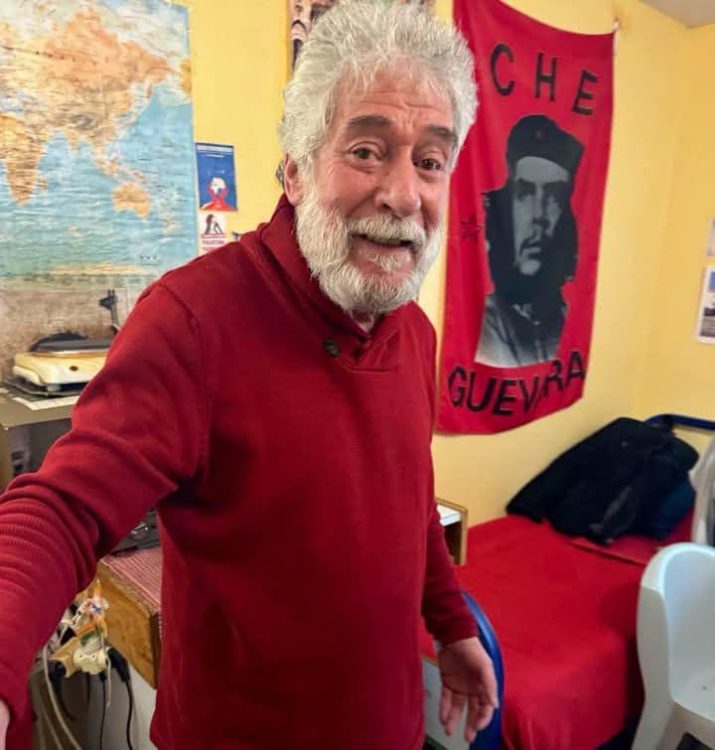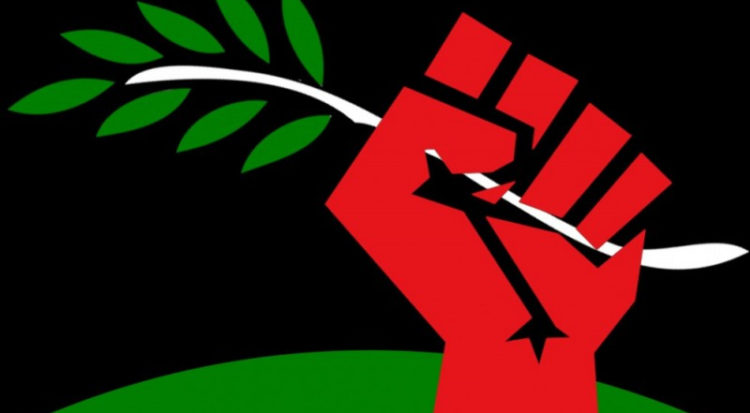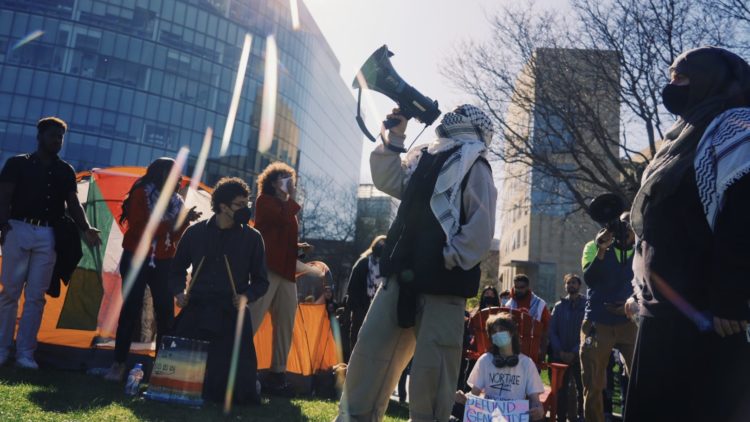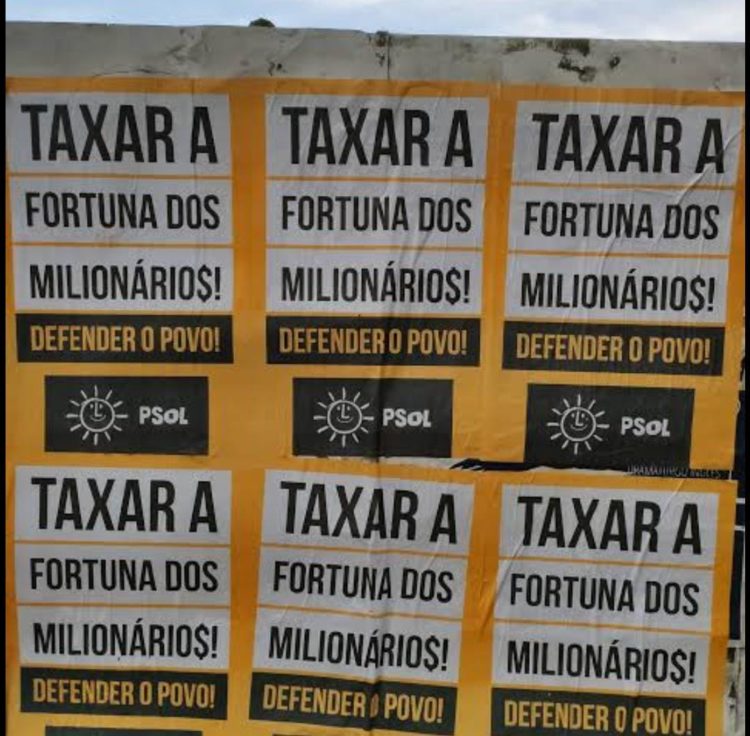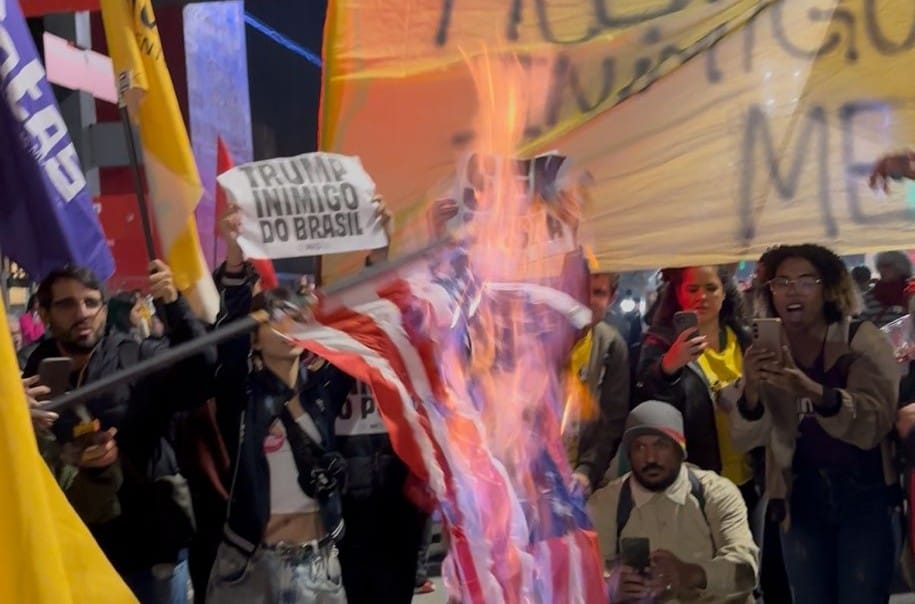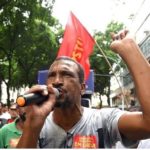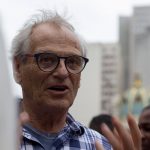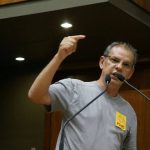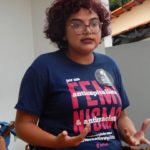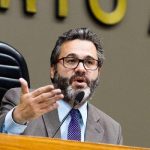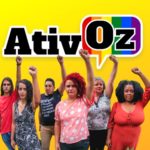A reading of the national situation and the need for an independent party
(Brazil) The reading of the current national situation still needs to start from the changes that took place in the country in June 2013. Since then, there has been a crisis in the bourgeois democratic political regime.
The reading of the current national situation still needs to start from the changes that occurred in the country in June 2013. Since then, there has been a crisis in the bourgeois democratic political regime. The capacity for political representation of the interests of the social classes has been tremendously eroded, the gap between the parties and the people has taken on an unprecedented dimension, the already worn-out institutions have discredited themselves even more, and the course of the country has been marked by confusion and uncertainty. For a few months even the weight of the streets in the political dispute acquired an importance that it had not had until then. The political stability finally achieved in 1994, with the election and government of Fernando Henrique Cardoso, and reinforced in 2003, with the rise of Lula and the confirmation of the social liberal nature of his government, became past. The New Republic, the regime that replaced the military regime, has fallen apart.
The balance of 2013, not surprisingly, continues to be the subject of much dispute. What for us was an irruption of the mass movement in the political sphere, with many subjective limitations and no program, but without which there would be no explanation for the feminist spring and the anti-racist rise in the country, the majority view in the PT is that it was a movement driven by the international right or hijacked by its interests. Nothing could be more false than this PT view, which aims to preserve the prestige of the party apparatus and tries to discredit a first and forceful mass response to the crisis of capitalism in general and Brazil in particular. The 2008 collapse that destabilized capitalism in the world hit first the central countries. Bourgeois and reformist economists even maintained that the crisis was not worldwide, leaving out the countries of the periphery. Nothing could be further from the truth.
The effects were only delayed. The crisis radiated from the center to the periphery and, in 2011, its symptoms began not to hide that Brazil would be no exception. In 2014, the crisis reached uncontrollable strength. The recession began. The country became impoverished. GDP fell in the following years. The June uprising occurred before the most powerful effects of the crisis, but its symptoms already existed, and the contrast between promises of a better life and reality was enormous, expressing itself in the explosion of demands hitherto contained. In the year 2013, bourgeois domination disorganized and it became evident that the PT, which had guaranteed the management of the state for ten years, no longer had the capacity to control the mass movement and channel its discontent.
The following year came the presidential elections. From 1994 on, the results of the polls were respected, and the mandates were completed. In 2014, the victory was narrow, but the PT managed the reelection of Dilma. The results were again enshrined, but the bourgeois opposition of Aécio Neves questioned the smoothness of the process. It was not a strong movement, but it was the first sign that the pact of the 1988 Constitution could be broken (in 1992 there was Collor’s impeachment, but this was in fact an exception, and respect for the electoral result and mandate has been followed since 1994). It is clear that the pact was based on absolute respect for the norms of a government that did not break with the interests of the ruling class. Part of this commitment was the Letter to the Brazilian People signed by Lula in August 2002. The alliance with Alckmin today is proof that Lula continues with the same commitment. But let’s go back to 2014.
Given Dilma’s reelection, the effort of the bourgeoisie was to guarantee the application of a more intense neoliberal economic adjustment program, whose essence was to offload the price of paying for the crisis onto the workers. Rousseff nominated Joaquim Lewy as Minister of Finance. Lewy was an economist at Banco Bradesco. The myth that Rousseff did everything by herself and that her spin to defend the neo-liberal plan would not be accompanied by Lula is contradicted by the fact that Lula wanted Bradesco’s owner Trabuco, Lewy’s boss, for the position. Trabuco didn’t want it and sent his employee for the job. From then on, the recession deepened, poverty increased and the base of the PT and the Dilma government evaporated once and for all in the streets of the country. Soon it would evaporate in the National Congress. During this period, Operation Lava Jato was already at the center of the agenda. The operation was hitting all the parties like a bomb, but its direction was primarily against the PT and its allies among the bourgeois parties. The PT, PP and MDB were the focus. Aécio Neves was still protected, as was the PSDB as a whole. Among the heads of the PP and MDB, the call was for Dilma and the government to stop the operation. The head of this pressure was the emedbist and notoriously corrupt Eduardo Cunha, president of the House of Representatives. Also on this front were Romero Juca, leader of the government in the Senate and of the MDB, Renan Calheiros, also of the MDB and president of the Senate, to name but a few of those who controlled the National Congress. The PT government did not have the strength to stop the Lava Jato because it did not control the Judiciary. This lack of control was the password for the fall of the government to become a necessity to preserve these sectors.
Since March 2015, with the entry on the scene of mass mobilizations for the impeachment, the scenario worsened for the government. After the break in 2014, when the entire party system, still led by the PT, PSDB and MDB, tried to stifle the effects of 2013 and give an idea that the country had returned to normality, the streets once again dominated the political environment. The policy of defense of the bourgeois regime combined the repression of protests during the 2014 World Cup and the democratic reaction through electoral dispute. This policy succeeded in demobilizing sectors of the left, intimidating and repressing some and producing illusions and co-opting others, but it could not rebuild the subjective bases of support for the political regime nor confidence in this rarefied democracy experienced in the country. Nor did it prevent the streets from continuing to express themselves. This time, it was under the direction of the right. It was a simulacrum of June 2013. A response, by the right, to the irruption of the streets.
The mass basis for the impeachment was given. The bourgeois political sectors uneasy with the Lava Jato scandal joined the bourgeois sectors linked to business, uneasy with the lack of strength of the government to deepen the neoliberal adjustment, finally closed ranks for the overthrow of the government. The wing of the PSDB linked to Fernando Henrique and Geraldo Alckmin was the last to join in. In the end, even the PSB of Marcelo Freixo, who may be supported by the PSOL in the elections for governor of Rio de Janeiro this year, voted in favor. The rule of respect for the mandate was broken. The parliamentary coup was consecrated in April 2016. The mobilizations against the impeachment were a failure because the government’s bases had eroded. Nevertheless, the PT’s line was to call for mobilizations whose content was support for the government’s policy and not of democratic unity; and, even so, making the false propaganda that the coup was of the same nature as the counterrevolutionary coup of 1964. At no time did it occur to the PT to propose an alternative mechanism to combat the impeachment maneuver with a policy of democratic enlargement and the holding, for example, of a new election, in which Lula himself was able to participate. Without support in Congress, without support in the streets, Dilma fell without pity or glory.
The Temer government has deepened the adjustment. It carried out the counter-reform of the social security system and the labor counter-reform. The political crisis, however, did not stop. The regime continued to crumble. Popular discontent with everything and everyone continued to be fed by the social crisis and by the accusations of Operation Lava Jato. It would soon become apparent that the heads of the operation, particularly its main boss, Judge Sergio Moro, would not accept to negotiate with the bourgeois parties that entered the government through the back door. His ambitions would lead him to enter directly into politics, by electoral means, trying to navigate his popularity, even if it was by the hand of the extreme right, by accepting the position of Minister of Justice under Bolsonaro. Even if to do so, Moro would commit the crime of removing former president Lula from the race by means of an illegal arrest.
Here it is interesting to note that, although Bolsonarism registered a fulminant rise in 2018, the chances of Lula winning the election were still real. The far right might not be the majority electoral force. A part of the population had separated the experience of Lula and Dilma. The impeachment interrupted the people’s full experience of the PT governments, and the disaster of the Temer government had already begun to rehabilitate Lula’s own strength, despite the media campaign, Lava Jato, and imprisonment on corruption charges.
But the strength of the far right was real and, with maneuvering, it eventually won. Bolsonaro mixed the anti-system vote against the New Republic with the reactionary votes of a mass of at least 10% to 15% of the ultra-right that are in all classes, but are driven by bourgeois sectors – especially agribusiness, but also bankers and other segments – and political sectors of the middle classes, especially those linked to the military. These sectors are still present and are the hardest core of Bolsonarism even today, in addition to reactionary sectors directly linked to evangelical churches and crime, be it militias or illegal extractivism.
The project of Bolsonarism has been to produce a change of the political regime in Brazil. From bourgeois democratic to semi-fascist. The collapse of the New Republic and the absence of a mass alternative from the left made it easier for this project to advance to the point of winning the presidency. His government achieved advances in this direction, but did not stabilize. On the contrary. In 2019, we had an uprising in education. In 2020, the mobilizations with anti-fascist sectors gathered large portions of a social vanguard, numbering in the thousands and far superior to the Bolsonarist mobilizations. Impeachment became part of the agenda. The divisions in the bourgeoisie were expressed in the government itself, with the breakup of Sergio Moro. The genocidal management of the pandemic carried out by Bolsonaro produced a national trauma, put most of the upper bourgeoisie in opposition, and the masses definitively broke with the government. The extreme right was unable to hegemonize the bourgeoisie.
We don’t need to repeat our thesis that the tragedy of Bolsonaro provoked a search of the masses that unfolded first in a strong street movement to overthrow him and that now tends to be channeled into the electoral response in favor of an alternative capable of defeating him in the elections. Lula is undoubtedly that name. His project is to rebuild the New Republic. Since the resumption of his political rights – impossible without a significant part of the STF not having such a reading in mind, notably Gilmar Mendes – the name of the former president has emerged as the leader of a front to take back the national government. From the beginning, Lula made it clear that this was not a leftist front. From then on, it was called the Broad Front. The Lula/Alckmin formula is the concretization of Lula’s policy of rebuilding the New Republic.
The PSOL, that during these last years, since its foundation, had been a pole to show that a left worthy of the name still existed, grew by asserting itself as an independent project. Such independence was expressed in the presidential elections, in which, since 2006, the PSOL has a candidate. Voting for Lula in the first round hinders the maintenance of this independence today, but it can be considered a tactical error. The problem is the policy of exalting Lula as our leader. Our commitment to vote in the second round for Lula against Bolsonaro is a democratic obligation, but this does not mean participating in his government. On the contrary. The working class needs an independent body, which will drive the struggles for its interests. Lula’s government will not be a workers’ government. It will be a government of class collaboration, social-liberal, as were his previous governments, thus also defined by the Unified Secretariat of the Fourth International. It is certain that Bolsonaro has not been defeated, and our priority is to be in the campaign for his overthrow with all our forces. But the PSOL needs to prepare for the future. The positions favorable to being part of the government have internal strength in the party. It is necessary to unite those who reject this proposal. Such a proposal liquidates the idea of an independent project and totally subordinates the PSOL to the PT, demanding that the sectors defending class independence publicly affirm their struggle. Part of this struggle is the defense of the party’s own candidacy in SP. Those who defend the incorporation in the Lula government want to enter through the door of SP, where the spaces for negotiation are greater, in order to incorporate the PSOL more prominently and to make it easier for this group of leaders to convince their bases to go into the military to take their place in the management of the bourgeois state.
Our tactic in defense of the federation was also part of this strategy for independence. If the view of the federation of the PSOL with the Rede is simplistic and superficial, it will be difficult to recognize that this is the only possible measure to protect the independent character of the PSOL in the current scenario, in which the overcoming of the barriers clause is imposed, although it is not the only reason to justify the decision. For some organizations, this overcoming would not be necessary, but in a scenario of little strength of social mobilization and real possibilities of a next government that tends to be of class collaboration and, therefore, a cluster in defense of the interests of the bourgeoisie, acting illegally would be like fighting in a vacuum. And the paths to avoid falling into this vacuum are not many, nor are they easy or safe.
Besides the federation with the Rede, another hypothesis that was in the air to overcome the barrier clause would be the federation hegemonized by the PT (with PCdoB and PV). This was the PSOL’s risk: having this hypothesis supported by a good part of its leadership, the same one that is already defending the entrance in Lula’s government in case of victory. Federation with the PT would make the party take a fundamental step towards integrating the petist project of reviving the New Republic and would be inside the bourgeois Lula-Alckmin government.
Doesn’t the class character of the Rede contradict the socialist principles that helped consolidate the PSOL as a radical left alternative in Brazil? No. This is because the PSOL will have the hegemony of the Federation, and its independent and anti-capitalist line will be maintained based on the directions and decisions that the party itself takes. It is these decisions that risk the future of the PSOL, and the internal sectors that center their line of struggle in rejecting the Federation with the Rede dilute the central struggle, lose focus and attribute problems to the Rede that are more the PSOL’s. The PSOL’s participation in an eventual Lula-Alckmin government is the real threat of adaptation, not the federation with the Rede. The course we should be alert to is the one proposed by the “PSOL Popular” (Primavera and Revolução Solidária). I hope that such a course will change. Currently, the position of the “PSOL Semente” bloc (Resistencia, Insurgencia and Subverta) is against participation in the government, although it sustains the direction of the PSOL Popular. In giving such support, it has not been fighting for that position. When it wakes up, if it wakes up to this battle against PSOL participation in government, it may be too late. The thousands of positions of trust may encourage the strength of opportunism in the PSOL and change the relationship of forces, now slightly favorable to adopt a formal resolution against participation.
So, more than deciding on its own candidacy or support for Lula in the first round or roar against federation with the Rede, the Conference of PSOL needs a solid resolution about not participating in the possible government. And this involves defeating the politics of adherence that is already underway in the country’s main state. Boulos, with the support of the president of the PSOL, Juliano Medeiros, withdrew his candidacy for the government of São Paulo, making evident his willingness to integrate the petist project starting with Haddad’s candidacy. The counterpart is the PT’s support for Boulos in the 2024 election for mayor of São Paulo. Haddad already has the support of Geraldo Alckmin. So, the talk about “defeating 30 years of Tucanato in SP” having a former Tucano and a former governor in the trenches sounds like a joke. But this is a scenario with tragic possibilities for the future of the party as a unitary and independent project, since the spaces of power in a SP government for the PSOL can be more easily handed over by the PT, materially strengthening the opportunist positions in the party.
The PSOL needs to be an independent, left-wing opposition pole in the next legislature. This is also true for Sao Paulo. When we think about the Federation with the Rede we don’t lose sight of this strategy. At this point, the Federation with the Rede is also positive, because it can increase the room for maneuver of the left-wing party members, especially if it counts with the election of names like Joênia Wapichana and Heloísa Helena, who have clear positions to the left of what will be the new government. Strengthening these cadres increases the “confusion” about what the Federation’s relationship will be with the next government and can be the key to maintaining the independent character of the PSOL and, why not, its survival as a leftist party.
Thus, with the Federation with the Rede, besides responding to the need to overcome the barrier clause in 2022 and 2026, we ensure that the PSOL Federation does not end up being with the PT, but with a smaller petty-bourgeois party that has in its interior sectors that were founders of the PSOL. These sectors have already made clear not only their willingness for democratic unity against Bolsonarism but also their independence from Lulism and its eventual government.
We know that our experience will not be the same as in 2003, when we called to found the PSOL, because now the country has an organized extreme right wing that needs to be defeated and such combat does not end in the elections. But also to confront the extreme right an independent position of the PSOL is the best location.
Roberto Robaina is a PSOL and Movimento Esquerda Socialista (MES) leader, editor of Revista Movimento and a councilman in Porto Alegre.
